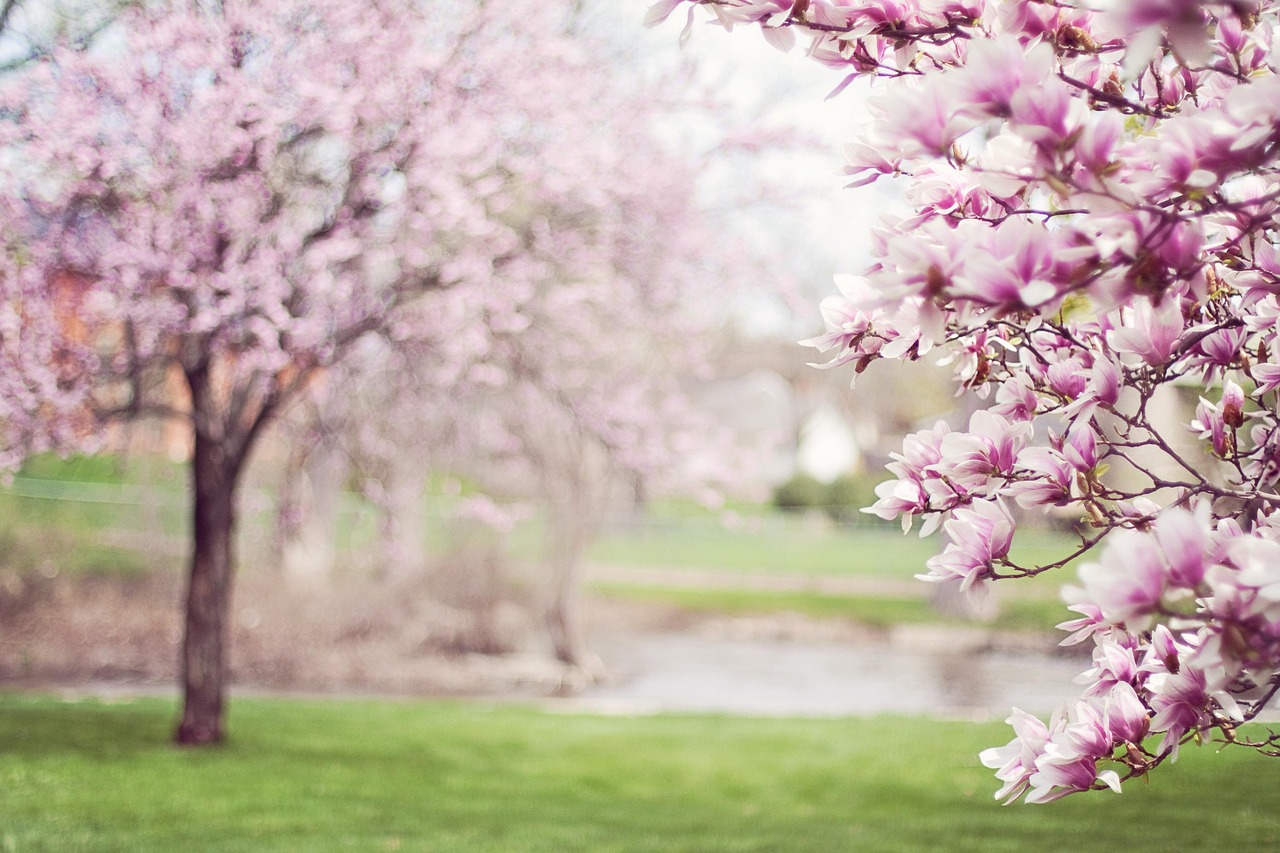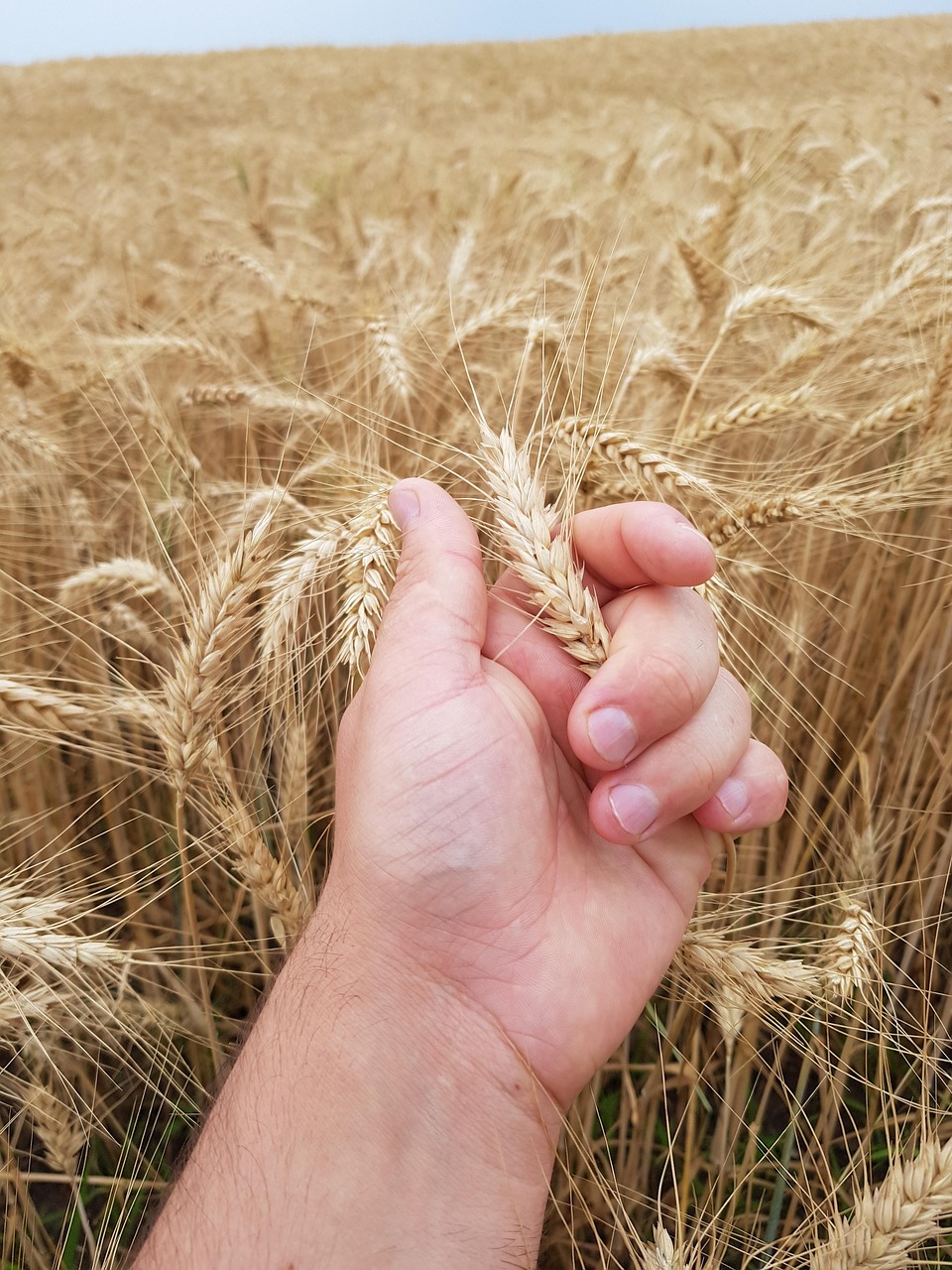Flowering trees are nature’s vibrant masterpieces, captivating our senses with their brilliant colors and enchanting fragrances. They play a significant role in beautifying landscapes, providing shade, and supporting local ecosystems. As spring approaches, the allure of these trees becomes ever more apparent, enticing gardeners and nature lovers alike to explore the diverse varieties available.
In gardens, parks, and along streets, flowering trees create stunning displays that can transform any environment. From the delicate blossoms of cherry trees to the bold hues of magnolias, these trees offer a spectacular show each year. They also invite various pollinators, including bees and butterflies, contributing to the health of our ecosystems. Understanding the different types of flowering trees and their unique characteristics can help you select the right ones for your space.

When choosing flowering trees for your garden or landscape, consider factors such as climate, soil type, and the amount of sunlight available. Some trees thrive in specific conditions while others are more adaptable. To assist you in making informed decisions, here is a table highlighting some popular flowering trees along with their key attributes:
| Tree Name | Bloom Season | Height (ft) | Sunlight Requirements |
|---|---|---|---|
| Cherry Blossom | Spring | 15-25 | Full Sun |
| Magnolia | Spring | 15-30 | Full Sun to Partial Shade |
| Crape Myrtle | Summer | 10-30 | Full Sun |
| Redbud | Early Spring | 20-30 | Full Sun to Partial Shade |
| Dogwood | Spring | 15-30 | Partial Shade |
The Beauty of Flowering Trees
The beauty of flowering trees extends beyond their aesthetic appeal. They provide numerous benefits that enhance both our environment and our well-being. For instance, these trees can help reduce air pollution by absorbing carbon dioxide and releasing oxygen. Additionally, they offer habitat and food for various wildlife species, thereby supporting biodiversity.
Flowering trees can also improve mental health by creating serene environments. Studies have shown that spending time around greenery can reduce stress and enhance overall mood. The presence of beautiful blooming trees in urban areas can encourage outdoor activities and foster a sense of community among residents.
Popular Varieties to Consider
There are countless varieties of flowering trees, each offering its own unique charm. Here are some popular choices that are often favored by gardeners:
- Japanese Cherry (Prunus serrulata): Known for its stunning pink flowers, this tree is a staple in many gardens.
- Lilac Tree (Syringa vulgaris): With fragrant purple blooms, this tree attracts butterflies and is a favorite for its scent.
- Golden Rain Tree (Koelreuteria paniculata): This tree produces yellow flowers followed by decorative seed pods, offering interest throughout the seasons.
- Kousa Dogwood (Cornus kousa): This tree features beautiful white blooms that turn into red fruit, providing visual appeal and food for birds.
- Saucer Magnolia (Magnolia x soulangeana): This hybrid tree has large flowers that range from white to deep pink, making it a stunning addition to any landscape.
Selecting the right flowering tree for your garden can be an exciting journey. Whether you prefer classic varieties or exotic options, understanding their requirements will help you create a thriving ecosystem in your outdoor space.
Choosing the Right Location
When planning to plant flowering trees, selecting the right location is crucial for their growth and health. Different species have varying requirements for sunlight, soil type, and moisture. Here are some key factors to consider when choosing the perfect spot for your flowering trees:
- Sunlight: Most flowering trees thrive in full sun, which generally means at least six hours of direct sunlight each day. However, some species can tolerate partial shade, so it’s essential to verify the specific needs of the tree you choose.
- Soil Type: Well-drained soil is vital for flowering trees. Sandy or loamy soils are ideal, while heavy clay can impede root growth and cause water retention issues. Conducting a soil test can help determine the right amendments needed for healthy growth.
- Space Requirements: Consider the mature size of the tree. Ensure that it has enough space to grow without competing with nearby plants, buildings, or power lines.
- Moisture Levels: Some flowering trees prefer moist conditions, while others are drought-tolerant. Be aware of the moisture levels in your chosen location and select a tree that matches those conditions.
Seasonal Interest
One of the joys of planting flowering trees is the seasonal interest they provide throughout the year. Understanding the blooming cycles can help you create a landscape that is vibrant in all seasons. Below are some examples of trees that bloom in different seasons:
- Spring Bloomers: Trees like the Cherry Blossom and Magnolia burst into bloom in early spring, offering breathtaking displays of color after winter.
- Summer Bloomers: Crape Myrtle shines in summer with its long-lasting flowers, providing vibrant colors during the warmer months.
- Fall Color: Trees like Sweetgum and Maple not only produce flowers but also exhibit stunning fall foliage, adding richness to your landscape.
- Winter Interest: Some species, such as Winter Jasmine, may not have traditional blooms but can still offer beautiful foliage or interesting bark during the winter months.
Caring for Your Flowering Trees

Proper care is essential to ensure that your flowering trees thrive. Here are some fundamental care tips to keep in mind:
- Watering: Newly planted trees require regular watering to establish their roots. Aim for deep watering once a week, especially during dry spells. Once established, many flowering trees will need less frequent watering.
- Fertilization: Applying a balanced fertilizer in early spring can support healthy growth and flowering. Always follow the manufacturer’s instructions for application rates.
- Pruning: Regular pruning helps maintain shape and promotes airflow within the tree. Remove any dead or diseased branches to encourage healthy growth.
- Pest Management: Keep an eye out for pests and diseases that may affect your trees. Early detection and treatment are crucial to preventing serious damage.
By understanding how to care for your flowering trees, you can ensure that they remain healthy and continue to provide beauty for years to come. Investing time and effort into their care will reward you with stunning displays and a flourishing environment.
Native vs. Non-Native Species
When selecting flowering trees, one important consideration is whether to choose native or non-native species. Native trees are adapted to local conditions and often require less maintenance compared to non-native varieties. Here are some benefits of choosing native flowering trees:
- Support Local Wildlife: Native trees provide habitat and food for local birds, insects, and other wildlife, promoting biodiversity.
- Lower Maintenance: These species are adapted to local soil, climate, and pests, usually requiring less water and fewer chemical treatments.
- Aesthetic Appeal: Native trees often blend seamlessly into the local landscape, enhancing its natural beauty.
Incorporating both native and non-native species can create a diverse and resilient garden. By carefully considering your choices, you can create a flourishing environment that showcases nature’s beauty while benefiting local ecosystems.

Environmental Benefits of Flowering Trees

Flowering trees offer more than just beauty to our landscapes. They play a critical role in supporting the environment and enhancing our quality of life. Understanding the various environmental benefits can deepen our appreciation for these magnificent trees. Here are some key advantages:
- Air Quality Improvement: Trees absorb carbon dioxide and release oxygen through photosynthesis. This process helps combat climate change by reducing greenhouse gases in the atmosphere.
- Pollinator Support: Flowering trees attract bees, butterflies, and other pollinators that are essential for the reproduction of many plants. This interaction supports biodiversity and strengthens local ecosystems.
- Soil Erosion Prevention: The roots of flowering trees stabilize soil, preventing erosion. They help maintain soil health by promoting nutrient cycling and improving water retention.
- Urban Heat Island Mitigation: In urban areas, flowering trees provide shade and reduce temperatures, helping to combat the heat island effect caused by concrete and asphalt.
Choosing the Right Flowering Trees for Your Climate
Selecting the appropriate flowering trees for your specific climate is vital to ensure successful growth and longevity. Different regions have unique climatic conditions that influence which species will thrive. Here are some tips to guide you in choosing the right trees based on your climate:
- Tropical Climates: Consider trees such as the Royal Poinciana or Jacaranda, which flourish in warm, humid environments.
- Temperate Climates: Trees like the Eastern Redbud and Flowering Dogwood do well in areas with distinct seasons, including cold winters and warm summers.
- Desert Climates: Opt for drought-resistant species such as the Desert Willow or Palo Verde, which can withstand dry conditions.
- Subarctic Climates: Trees like the Siberian Peashrub and Amur Cherry are adapted to colder conditions and can survive harsh winters.
Popular Flowering Trees by Region
Understanding which flowering trees are popular in different regions can help you make informed choices for your landscape. Here are some flowering trees that are frequently cultivated in various parts of the country:
East Coast
- Cherry Blossom (Prunus serrulata): Known for its breathtaking spring blooms, it is iconic in Washington D.C.
- Kousa Dogwood (Cornus kousa): Valued for its showy flowers and fruit, this tree is popular in gardens across the East Coast.
West Coast
- Crape Myrtle (Lagerstroemia indica): This tree is favored for its long-lasting summer flowers and vibrant fall foliage.
- Redbud (Cercis canadensis): Known for its stunning pink to purple early spring blossoms, it thrives in many areas of the West Coast.
Midwest
- Serviceberry (Amelanchier spp.): This native tree offers beautiful white flowers in spring and delicious berries in summer.
- Saucer Magnolia (Magnolia x soulangeana): Appreciated for its large, fragrant flowers, it makes a striking addition to any garden.
Southeast
- Southern Magnolia (Magnolia grandiflora): Famous for its large white flowers and glossy leaves, this tree is a classic choice in southern landscapes.
- Catalpa (Catalpa bignonioides): Known for its large, showy white flowers, this tree attracts bees and butterflies during blooming season.
Selecting flowering trees based on regional popularity can enhance the beauty of your landscape while ensuring that the trees thrive in their environment. Each region has its unique charm, making it possible to create a diverse and vibrant garden that celebrates local flora.
Creating a Blooming Landscape
Transforming your garden with flowering trees requires careful planning, but the rewards are immense. The right choice of trees can provide stunning visual displays, enhance biodiversity, and improve air quality in your surroundings. When creating a blooming landscape, consider mixing various species to achieve year-round interest.
In addition to flowering trees, incorporating shrubs, perennials, and annuals can further enrich your garden. For example, planting flowering shrubs like hydrangeas or azaleas alongside your trees can complement their blooms and create a layered aesthetic. Ground cover plants can also help maintain soil moisture and prevent weeds, making maintenance easier.
Seasonal Planning
To maximize the visual impact of your flowering trees, think about the timing of their blooms. By selecting trees that flower at different times throughout the year, you can ensure continuous color and interest in your garden. Here are some suggestions for seasonal planning:
- Spring: Plant early bloomers like cherry blossoms and magnolias to kick off the flowering season with vibrant colors.
- Summer: Include summer bloomers like crape myrtle and golden rain tree for a bright and lively mid-year display.
- Fall: Consider trees that offer autumn foliage, such as sweetgum or maple, for stunning fall colors.
- Winter: Incorporate evergreen varieties or trees with interesting bark like the paperbark maple for visual appeal during the colder months.
Maintenance and Care
Establishing your flowering trees is just the beginning. Regular maintenance is essential for their longevity and health. Here are some maintenance tips to keep your trees thriving:
- Mulching: Apply a layer of mulch around the base of your trees to retain moisture, suppress weeds, and regulate soil temperature.
- Watering: During dry periods, ensure your trees receive adequate water, especially during their first few years of growth.
- Pest Control: Regularly inspect your trees for signs of pests or diseases. Early intervention can prevent more significant issues down the line.
- Seasonal Pruning: Prune your trees in late winter or early spring to remove dead or diseased branches and promote healthy growth.
Final Thoughts
Flowering trees are indeed nature’s showstoppers, bringing beauty, fragrance, and life to our environments. By understanding their unique characteristics and requirements, you can select the perfect varieties that suit your space and climate. Whether you choose native species that support local ecosystems or exotic varieties that bring a touch of flair, flowering trees will undoubtedly enhance your landscape.
Creating a garden filled with these stunning trees is an investment in beauty and ecological health. With careful planning, proper care, and thoughtful selection, you can cultivate a vibrant outdoor space that brings joy throughout the seasons. Embrace the journey of planting and nurturing these wonderful trees, and enjoy the spectacular displays they offer year after year.
Your garden can become a sanctuary that celebrates nature’s beauty while contributing positively to the environment. So gather your tools, research your preferred species, and start planting; a world of blooming wonder awaits!
